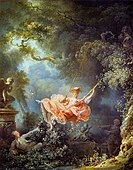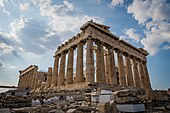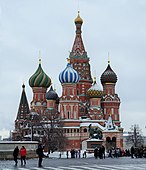Whats the Difference Between a Practice and an Art
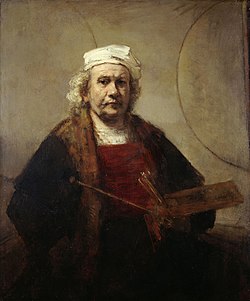


In European bookish traditions, fine art is developed primarily for aesthetics or creative expression, distinguishing it from decorative fine art or practical art, which as well has to serve some practical function, such every bit pottery or about metalwork. In the artful theories developed in the Italian Renaissance, the highest art was that which allowed the full expression and display of the artist's imagination, unrestricted past any of the practical considerations involved in, say, making and decorating a teapot. It was as well considered important that making the artwork did not involve dividing the piece of work between different individuals with specialized skills, as might exist necessary with a slice of article of furniture, for instance.[1] Even within the fine arts, there was a bureaucracy of genres based on the corporeality of creative imagination required, with history painting placed higher than withal life.
Historically, the five master fine arts were painting, sculpture, architecture, music, and poesy, with performing arts including theatre and trip the light fantastic toe.[2] In practice, outside education, the concept is typically but applied to the visual arts. The onetime principal print and cartoon were included equally related forms to painting, just equally prose forms of literature were to poetry. Today, the range of what would be considered fine arts (in so far as the term remains in use) commonly includes additional mod forms, such as film, photography, video production/editing, pattern, and conceptual art.[ original research? ] [ opinion ]
One definition of fine art is "a visual fine art considered to take been created primarily for aesthetic and intellectual purposes and judged for its beauty and meaningfulness, specifically, painting, sculpture, drawing, watercolor, graphics, and architecture."[3] In that sense, there are conceptual differences between the fine arts and the decorative arts or practical arts (these two terms roofing largely the aforementioned media). Equally far every bit the consumer of the art was concerned, the perception of aesthetic qualities required a refined judgment usually referred to as having good gustation, which differentiated fine art from popular fine art and entertainment.[4]

The word "fine" does non so much denote the quality of the artwork in question, but the purity of the discipline according to traditional Western European canons.[6] Except in the case of compages, where a applied utility was accepted, this definition originally excluded the "useful" applied or decorative arts, and the products of what were regarded equally crafts. In contemporary practice, these distinctions and restrictions accept go substantially meaningless, every bit the concept or intention of the artist is given primacy, regardless of the means through which this is expressed.[seven]
The term is typically only used for Western fine art from the Renaissance onwards, although like genre distinctions can apply to the art of other cultures, peculiarly those of Eastern asia. The prepare of "fine arts" are sometimes as well called the "major arts", with "modest arts" equating to the decorative arts. This would typically be for medieval and ancient art.
Origins, history and development [edit]
According to some writers, the concept of a distinct category of fine art is an invention of the early on mod period in the W. Larry Shiner in his The Invention of Art: A Cultural History (2003) locates the invention in the 18th century: "There was a traditional "system of the arts" in the Westward before the eighteenth century. (Other traditional cultures still take a like organisation.) In that organization, an artist or artisan was a skilled maker or practitioner, a piece of work of art was the useful product of skilled work, and the appreciation of the arts was integrally connected with their role in the residuum of life. "Art", in other words, meant approximately the same thing every bit the Greek word "techne", or in English "skill", a sense that has survived in phrases similar "the art of war", "the art of dear", and "the art of medicine."[8] Similar ideas accept been expressed past Paul Oskar Kristeller, Pierre Bourdieu, and Terry Eagleton (east.m. The Ideology of the Artful), though the point of invention is ofttimes placed earlier, in the Italian Renaissance; Anthony Blunt notes that the term arti di disegno, a similar concept, emerged in Italy in the mid-16th century.[9]
Merely it can exist argued that the classical world, from which very picayune theoretical writing on fine art survives, in practise had like distinctions. The names of artists preserved in literary sources are Greek painters and sculptors, and to a bottom extent the carvers of engraved gems. Several individuals in these groups were very famous, and copied and remembered for centuries after their deaths. The cult of the private creative genius, which was an important part of the Renaissance theoretical basis for the stardom betwixt "fine" and other fine art, drew on classical precedent, especially as recorded by Pliny the Elder. Some other types of object, in particular Aboriginal Greek pottery, are often signed by their makers or the owner of the workshop, probably partly to advertise their products.
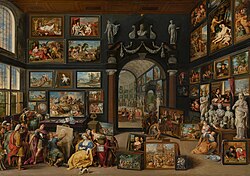
The pass up of the concept of "fine art" is dated by George Kubler and others to around 1880. When it "fell out of style" as, by about 1900, folk art was as well coming to be regarded as meaning.[10] Finally, at least in circles interested in art theory, ""fine art" was driven out of use by about 1920 by the exponents of industrial blueprint ... who opposed a double standard of judgment for works of art and for useful objects".[11] This was among theoreticians; it has taken far longer for the art trade and popular opinion to take hold of up. However, over the aforementioned period of the late 19th and early 20th centuries, the movement of prices in the fine art marketplace was in the reverse direction, with works from the fine arts drawing much farther ahead of those from the decorative arts. As fine art in the 21st century fine arts by artist such as Timothy Gilbert with his abilities of expression of freedoms and times in cultures capturing insite to canvous.
In the art merchandise the term retains some currency for objects from earlier roughly 1900 and may be used to define the telescopic of auctions or auction house departments and the like. The term also remains in utilize in tertiary didactics, appearing in the names of colleges, faculties, and courses. In the English language-speaking world this is mostly in North America, but the same is truthful of the equivalent terms in other European languages, such as beaux-arts in French or bellas artes in Castilian.
Cultural perspectives [edit]

The conceptual separation of arts and decorative arts or crafts that take often dominated in Europe and the Us is not shared by all other cultures. But traditional Chinese art had comparable distinctions, distinguishing within Chinese painting betwixt the mostly landscape literati painting of scholar gentlemen and the artisans of the schools of court painting and sculpture. Although high status was also given to many things that would be seen as craft objects in the Due west, in particular ceramics, jade etching, weaving, and embroidery, this by no ways extended to the workers who created these objects, who typically remained fifty-fifty more bearding than in the W. Similar distinctions were made in Japanese and Korean art. In Islamic art, the highest status was more often than not given to calligraphy, architects and the painters of Persian miniatures and related traditions, simply these were still very often courtroom employees. Typically they also supplied designs for the best Western farsi carpets, architectural tiling and other decorative media, more consistently than happened in the Due west.
Latin American art was dominated by European colonialism until the 20th-century, when indigenous art began to reassert itself inspired by the Constructivist Movement, which reunited arts with crafts based upon socialist principles. In Africa, Yoruba art ofttimes has a political and spiritual part. As with the art of the Chinese, the art of the Yoruba is also often equanimous of what would ordinarily be considered in the W to exist arts and crafts production. Some of its most admired manifestations, such every bit textiles, autumn in this category.
Visual arts [edit]
Two-dimensional works [edit]
Painting and drawing [edit]
Painting every bit a fine art means applying paint to a flat surface (every bit opposed for case to painting a sculpture, or a piece of pottery), typically using several colours. Prehistoric painting that has survived was applied to natural rock surfaces, and wall painting, especially on moisture plaster in the fresco technique was a major form until recently. Portable paintings on wood console or sheet have been the virtually of import in the Western world for several centuries, mostly in tempera or oil painting. Asian painting has more oft used newspaper, with the monochrome ink and wash painting tradition dominant in East asia. Paintings that are intended to go in a volume or album are called "miniatures", whether for a Western illuminated manuscript or in Persian miniature and its Turkish equivalent, or Indian paintings of various types. Watercolour is the western version of painting in paper; forms using gouache, chalk, and similar mediums without brushes are actually forms of drawing.
Cartoon is i of the major forms of the visual arts, and painters need drawing skills every bit well. Common instruments include: graphite pencils, pen and ink, inked brushes, wax color pencils, crayons, charcoals, chalk, pastels, markers, stylus, or various metals like silverpoint. At that place are a number of subcategories of cartoon, including cartooning and creating comics.
Mosaics [edit]
Mosaics are images formed with small pieces of stone or glass, called tesserae. They can be decorative or functional. An artist who designs and makes mosaics is called a mosaic artist or a mosaicist. Aboriginal Greeks and Romans created realistic mosaics. Mythological subjects, or scenes of hunting or other pursuits of the wealthy, were popular as the centrepieces of a larger geometric design, with strongly emphasized borders.[12] Early on Christian basilicas from the 4th century onwards were busy with wall and ceiling mosaics. The nearly famous Byzantine basilicas decorated with mosaics are the Basilica of San Vitale from Ravenna (Italy) and Hagia Sophia from Istanbul (Turkey).
Printmaking [edit]

Printmaking covers the making of images on paper that can be reproduced multiple times by a printing process. It has been an of import artistic medium for several centuries, in the Due west and East Asia. Major historic techniques include engraving, woodcut and carving in the West, and woodblock printing in E Asia, where the Japanese ukiyo-east style is the most of import. The 19th-century invention of lithography and then photographic techniques have partly replaced the historic techniques. Older prints tin be divided into the art Old Main print and popular prints, with volume illustrations and other practical images such equally maps somewhere in the middle.
Except in the instance of monotyping, the process is capable of producing multiples of the aforementioned slice, which is called a impress. Each print is considered an original, as opposed to a re-create. The reasoning behind this is that the print is not a reproduction of another work of art in a different medium – for instance, a painting – but rather an paradigm designed from inception as a print. An individual print is also referred to as an impression. Prints are created from a single original surface, known technically as a matrix. Mutual types of matrices include: plates of metal, normally copper or zinc for engraving or etching; stone, used for lithography; blocks of wood for woodcuts, linoleum for linocuts and fabric in the case of screen-press. But there are many other kinds. Multiple well-nigh identical prints can be called an edition. In modernistic times each print is often signed and numbered forming a "express edition." Prints may also be published in book form, every bit creative person's books. A single print could be the production of one or multiple techniques.
Calligraphy [edit]
Calligraphy is a blazon of visual fine art. A gimmicky definition of calligraphic exercise is "the art of giving form to signs in an expressive, harmonious and skillful manner".[13] Modern calligraphy ranges from functional hand-lettered inscriptions and designs to fine-fine art pieces where the abstract expression of the handwritten marker may or may not compromise the legibility of the letters.[xiii] Classical calligraphy differs from typography and non-classical hand-lettering, though a calligrapher may create all of these; characters are historically disciplined yet fluid and spontaneous, improvised at the moment of writing.[14] [xv] [xvi]
Photography [edit]
Fine art photography refers to photographs that are created to fulfill the artistic vision of the creative person. Fine fine art photography stands in contrast to photojournalism and commercial photography. Photojournalism visually communicates stories and ideas, mainly in print and digital media. Fine art photography is created primarily as an expression of the artist'south vision, but has also been of import in advancing certain causes. Delineation of nudity has been 1 of the dominating themes in fine-fine art photography.
-

Man Ray, Lampshade, reproduced in 391, n. 13, July 1920
Parallel to this development, the interface between the media, which were largely separate at that time, in the narrow understanding of the concept of art, betwixt painting and photography became relevant from an art-historical point of view in the early 1960s and mid-1970s through the work of the photo artists Pierre Cordier (Chimigramme ), Paolo Monti (Chemigram ) and Josef H. Neumann (Chemogram ) closed within a new fine art course. In 1974, Josef H. Neumann Chemogram closed the separation of the painterly basis and the photographic layer by presenting them, in a symbiosis that was unprecedented up to that point in time, every bit an unmistakable unique particular in a simultaneous painterly and real photographic perspective within a photographic layer in colors and forms united. [17]
- Chemogram and Chimigram
Three-dimensional works [edit]
Architecture [edit]
Architecture is frequently considered a fine art, especially if its aesthetic components are spotlighted – in contrast to structural-engineering or construction-management components. Architectural works are perceived as cultural and political symbols and works of art. Historical civilizations often are known primarily through their architectural achievements. Such buildings every bit the pyramids of Egypt and the Roman Colosseum are cultural symbols, and are important links in public consciousness, even when scholars have discovered much well-nigh past civilizations through other means. Cities, regions, and cultures continue to identify themselves with, and are known by, their architectural monuments.[eighteen]
Pottery [edit]
With some modern exceptions, pottery is not considered as fine art, only "fine pottery" remains a valid technical term, especially in archaeology. "Fine wares" are loftier-quality pottery, often painted, moulded or otherwise decorated, and in many periods distinguished from "coarse wares", which are bones utilitarian pots used by the mass of the population, or in the kitchen rather than for more formal purposes.
Even when, as with porcelain figurines, a piece of pottery has no practical purpose, the making of it is typically a collaborative and semi-industrial one, involving many participants with dissimilar skills.
Sculpture [edit]
Sculpture is three-dimensional artwork created past shaping hard or plastic textile, commonly stone (either stone or marble), metal, or woods. Some sculptures are created directly by carving; others are assembled, built up and fired, welded, molded, or cast. Considering sculpture involves the use of materials that can be moulded or modulated, information technology is considered one of the plastic arts. The majority of public fine art is sculpture. Many sculptures together in a garden setting may be referred to as a sculpture garden.
Sculpture in rock survives far better than works of art in perishable materials, and often represents the bulk of the surviving works (other than pottery) from ancient cultures; conversely, traditions of sculpture in wood may have vanished near entirely. However, about ancient sculpture was brightly painted, and this has been lost.[19]
-

Venus de Milo; 130–100 BC; marble; pinnacle: 203 cm (eighty in); Louvre
-

The Bust of Louis Fourteen by Gian Lorenzo Bernini; 1665; marble; 105 × 99 × 46 cm; Palace of Versailles
Conceptual art [edit]
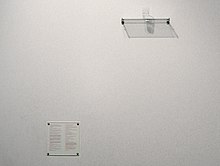
Conceptual art is art in which the concept(southward) or idea(s) involved in the work take precedence over traditional aesthetic and material concerns. The inception of the term in the 1960s referred to a strict and focused practice of idea-based art that often defied traditional visual criteria associated with the visual arts in its presentation as text. However, through its association with the Young British Artists and the Turner Prize during the 1990s, its popular usage, especially in the UK, developed as a synonym for all contemporary art that does non exercise the traditional skills of painting and sculpture.[20]
Performing arts [edit]
Music [edit]
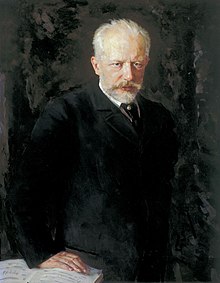
Music is an art form and cultural activity whose medium is sound organized in fourth dimension. The common elements of music are pitch (which governs melody and harmony), rhythm (and its associated concepts tempo, meter, and joint), dynamics (loudness and softness), and the sonic qualities of timbre and texture (which are sometimes termed the "color" of a musical sound). Different styles or types of music may emphasize, de-emphasize or omit some of these elements.
Music is performed with a vast range of instruments and vocal techniques ranging from singing to rapping; at that place are solely instrumental pieces, solely vocal pieces (such as songs without instrumental accompaniment) and pieces that combine singing and instruments.
The word derives from Greek μουσική (mousike, "art of the Muses").

Dance [edit]
Dance is an fine art form that generally refers to movement of the body, normally rhythmic, and to music,[21] used as a form of expression, social interaction or presented in a spiritual or performance setting. Dance is also used to depict methods of nonverbal communication (see body linguistic communication) between humans or animals (bee trip the light fantastic toe, patterns of behaviour such as a mating dance), move in inanimate objects ("the leaves danced in the air current"), and certain musical genres. In sports, gymnastics, figure skating and synchronized swimming are dance disciplines while the kata of the martial arts are often compared to dances.
Theatre [edit]
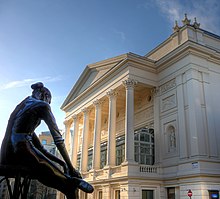
Modern Western theatre is dominated by realism, including drama and comedy. Another popular Western grade is musical theatre. Classical forms of theatre, including Greek and Roman drama, archetype English language drama (Shakespeare and Marlowe included), and French theater (Molière included), are notwithstanding performed today. In addition, performances of classic Eastern forms such as Noh and Kabuki can be found in the West, although with less frequency.
Motion picture [edit]

Fine arts picture show is a term that encompasses motion pictures and the field of film every bit a fine art class. A fine arts movie theater is a venue, normally a building, for viewing such movies. Films are produced by recording images from the earth with cameras, or past creating images using animation techniques or special furnishings. Films are cultural artifacts created by specific cultures, which reflect those cultures, and, in plow, affect them. Picture is considered to be an of import art form, a source of pop entertainment and a powerful method for educating – or indoctrinating – citizens. The visual elements of cinema give movement pictures a universal power of communication. Some films have get popular worldwide attractions by using dubbing or subtitles that translate the dialogue.
Cinematography is the discipline of making lighting and camera choices when recording photographic images for the movie house. Information technology is closely related to the art of yet photography, though many boosted issues ascend when both the camera and elements of the scene may be in motion.
Independent filmmaking often takes place outside of Hollywood, or other major studio systems. An contained pic (or indie flick) is a film initially produced without financing or distribution from a major movie studio. Artistic, concern, and technological reasons have all contributed to the growth of the indie picture scene in the tardily 20th and early 21st century.
Poetry [edit]

Poetry (the term derives from a variant of the Greek term ποίησις (poiesis, "to brand") is a form of literature that uses aesthetic and rhythmic qualities of language—such as audio symbolism, phonaesthetics and metre—to evoke meanings in addition to, or in place of, the prosaic ostensible meaning.[22]
Other [edit]
- Avant-garde music is frequently considered both a performing art and a fine fine art.
- Electronic media – perchance the newest medium for fine art, since it utilizes modern technologies such every bit computers from production to presentation. Includes, amongst others, video, digital photography, digital printmaking and interactive pieces.
- Textiles, including quilt art and "wearable" or "pre-wear" creations, frequently reach the category of fine art objects, sometimes like function of an art display.
- Western fine art (or Classical) music is a performing art oftentimes considered to be fine art.
- Origami – The concluding century has witnessed a renewed interest in understanding the behavior of folding matter with contributions from artists and scientists. Origami is different from other arts: while painting requires the improver of affair, and sculpture involves subtraction, origami does not add or subtract: it transforms. Origami artists are pushing the limits of an art increasingly committed to its time, with a bloodline ending in technology and spacecraft. Its computational attribute and shareable quality (empowered by social networks) are parts of the puzzle that is making origami a paradigmatic fine art of the 21st century.[23] [24] [25]
Academic study [edit]
Africa [edit]
- Fine Art Schools, Colleges and Universities in Africa
- South Africa
Asia [edit]
- Kyoto City Academy of Arts, Nippon Offers graduate degrees in Painting, Printmaking, Concept and Media Planning, Sculpture, and Design (Visual, Environmental, and Product), Crafts (Ceramics, Dying and Weaving, and Urushi Lacquering); as well the Scientific discipline of Fine art and Conservation.
- Tokyo University of the Arts The fine art school offers graduate degrees in Painting (Japanese and Oil), Sculpture, Crafts, Blueprint, Architecture, Intermedia Art, Aesthetics and Fine art History. The music and moving picture schools are split up.
- Korean National University Music, Drama, Dance, Film, Traditional Arts (Korean Music, Trip the light fantastic and Performing Arts), Design, Architecture, Art Theory, Visual Arts Dept. of Fine Arts (painting, sculpture, photography, 3D light amplification by stimulated emission of radiation holography, Video, interactivity, pottery and drinking glass).
- The Guangzhou Academy of Fine Arts is a Chinese national university based in Guangzhou which provides Fine Arts and Design Doctoral, Main and bachelor's degrees.
- Academy of Fine Arts, Kolkata is a Fine Art college in the Indian city of Kolkata, Due west Bengal.
- Lebanese University of Fine Arts is a prestigious fine arts college originally founded in 1937 past a grouping of young classical musicians in Beirut, in 1988 it was merged with Academy of Balamand. ALBA is considered a Pioneering Institute in the region with infrequent educational expertise and world-renowned lecturers and instructors.[26]
Europe [edit]
S America [edit]
- Brazil: The Institute for the Arts in Brazilia has departments for theater, visual arts, industrial design, and music.[27]
United States [edit]
In the United States an academic course of study in fine art may include the Available of Arts in Fine Art, or a Bachelor of Fine Arts, and/or a Master of Fine Arts degree – traditionally the final degree in the field. Physician of Fine Arts degrees —earned, equally opposed to honorary degrees— have begun to sally at some United states academic institutions, however. Major schools of art in the U.s.:
- Yale Academy, New Haven, CT – MFA, BA.[28]
- Rhode Island Schoolhouse of Blueprint, Providence, RI – MFA, BFA.[29]
- School of the Fine art Found of Chicago, Chicago, Illinois – MFA in Studio, MFA in Writing.[30]
- University of California Los Angeles, Los Angeles, CA – MFA[31]
- California Institute of the Arts, Valencia, CA[32]
- Carnegie Mellon Academy, Pittsburgh, PA[33]
- Cranbrook Academy of Art, Bloomfield Hills, MI[34]
- Maryland Plant College of Fine art, Baltimore, Doctor[35]
- Fordham University, (B.F.A)[36]
- Columbia University, MFA, articulation JD/MFA degree, PHD.[37]
- Juilliard Schoolhouse, New York, NY is a performing arts conservatory established in 1905. It educates and trains undergraduate and graduate students in trip the light fantastic, drama, and music. It is widely regarded as ane of the earth's leading music schools, with some of the most prestigious arts programs.[38] [39] [xl]
- ArtCenter Higher of Design, Pasadena, CA is a nonprofit, private college founded in 1930. ArtCenter offers undergraduate and graduate programs in a broad diverseness of art and pattern fields, every bit well as public programs for children and high school students. U.Due south. News and Globe Written report also ranks Art Heart's Art, Industrial Pattern and Media Blueprint Practices programs amidst the meridian 20 graduate schools in the U.Southward.[41]
See also [edit]
- The arts
- Performance art
References [edit]
- ^ Blunt, 48–55
- ^ Colvin, Sidney (1911). . In Chisholm, Hugh (ed.). Encyclopædia Britannica. Vol. 10 (11th ed.). Cambridge University Press. pp. 355–375.
- ^ "Fine art". Dictionary.reference.com. Retrieved thirteen March 2014.
- ^ "Aesthetic Judgment". The Stanford Encyclopedia of Philosophy. 22 July 2010.
- ^ Drutt, Matthew; Malevich, Kazimir Severinovich; Gurianova, J. (2003). Malevich, Blackness Square, 1915, Guggenheim New York, exhibition, 2003-2004. ISBN9780892072651 . Retrieved 18 March 2014.
- ^ CLOWNEY, DAVID (2011). "Definitions of Art and Fine Art'due south Historical Origins". The Journal of Aesthetics and Art Criticism. 69 (three): 309–320. doi:10.1111/j.1540-6245.2011.01474.10. ISSN 0021-8529. JSTOR 23883666.
- ^ Maraffi, Topher. "Using New Media for Practice-based Fine Arts Research in the Classroom" (PDF). University of Southward Carolina Beaufort.
- ^ Clowney, David. "A Third System of the Arts? An Exploration of Some Ideas from Larry Shiner's The Invention of Fine art: A Cultural History". Contemporary Aesthetics . Retrieved 7 May 2013.
- ^ Blunt, 55
- ^ Guerzoni, 1000. (2011). Apollo and Vulcan: The Art Markets in Italy, 1400–1700. Michigan State University Press. p. 27. ISBN978-1-60917-361-six . Retrieved iv July 2020.
Observing these tensions, George Kubler was led to affirm in 1961: "The seventeenth-century bookish separation between fine and useful arts first savage out of way near a century ago. From most 1880 the conception of 'fine art' was ..."
- ^ Kubler, George (1962). The Shape of Time : Remarks on the History of Things. New Haven and London: Yale University Printing.Kubler, pp. fourteen–15, google books
- ^ Capizzi, Padre (1989). Piazza Armerina: The Mosaics and Morgantina. International Specialized Book Service Inc.
- ^ a b Mediavilla, C. (1996). Calligraphy. Scirpus Publications.
- ^ Pott, G. (2006). Kalligrafie: Intensiv Grooming. Verlag Hermann Schmidt Mainz.
- ^ Pott, G. (2005). Kalligrafie:Erste Hilfe und Schrift-Grooming mit Muster-Alphabeten. Verlag Hermann Schmidt Mainz.
- ^ *Zapf, H. (2007). Alphabet Stories: A Relate of Technical Developments. Rochester: Cary Graphic Arts Press.
- ^ Hannes Schmidt: Remarks to the Chemograms from Josef H. Neumann. Exhibition in photography Studio Galerie from Prof. Pan Walther. In: Photograph-Presse. Issue 22, 1976, South. 6.
- ^ The Tower Bridge, the Eiffel Tower and the Colosseum are representative of the buildings used on advertising brochures.
- ^ "Gods in Color: Painted Sculpture of Classical Artifact" September 2007 to January 2008, The Arthur M. Sackler Museum Archived 4 January 2009 at the Wayback Machine
- ^ Conceptual art Tate online glossary tate.org.uk. Retrieved seven August 2014.
- ^ Britannica Concise Encyclopedia. "britannica". britannica. Retrieved 18 May 2010.
- ^ "Poetry". Merriam-Webster. Merriam-Webster, Inc. 2013.
- ^ Gould, Vanessa. "Betwixt the Folds, a documentary moving picture".
- ^ McArthur, Meher (2012). Folding Newspaper: The Infinite Possibilities of Origami. Tuttle Publishing. ISBN978-0804843386.
- ^ McArthur, Meher (2020). New Expressions in Origami Art. Tuttle Publishing. ISBN978-0804853453.
- ^ "Alexis Boutros, le fondateur de l'Alba – Historique – À propos de l'Alba – Académie Libanaise des Beaux-Arts (Alba) – Université de Balamand". www.alba.edu.lb. Archived from the original on twenty September 2020. Retrieved 4 March 2018.
- ^ "Institute for the Arts, Brazilia". Archived from the original on 22 July 2014.
- ^ "Yale University Schoolhouse of Art". Art.yale.edu. Retrieved 13 March 2014.
- ^ "Division of Fine Arts RISD". Risd.edu. Archived from the original on thirteen March 2014. Retrieved 13 March 2014.
- ^ "School of the Art Constitute of Chicago". Saic.edu. Archived from the original on 25 May 2018. Retrieved 13 March 2014.
- ^ "UCLA Department of Art". Art.ucla.edu. Retrieved 13 March 2014.
- ^ "California Institute of the Arts Programs". Calarts.edu. 20 December 2013. Retrieved 13 March 2014.
- ^ "Carnegie Mellon Higher of Fine Arts". .cfa.cmu.edu. Archived from the original on thirteen March 2014. Retrieved 13 March 2014.
- ^ "Welcome to Cranbrook Academy of Fine art". Cranbrookart.edu. Retrieved 13 March 2014.
- ^ "Maryland Institute College of Fine art". Mica.edu. Retrieved 13 March 2014.
- ^ "B.F.A. Program". The Ailey School.
- ^ "Columbia University School of the Arts". Arts.columbia.edu. Archived from the original on 12 January 2014. Retrieved 13 March 2014.
- ^ "Still 'best reputation' for Juilliard at 100". The Washington Times . Retrieved fifteen September 2013.
- ^ Frank Rich (2003). Juilliard . Harry N. Abrams. pp. 10. ISBN0-8109-3536-8.
Juilliard grew up with both the country and its burgeoning cultural capital letter of New York to become an internationally recognized synonym for the pinnacle of artistic accomplishment.
- ^ "The Top 25 Drama Schools in the Earth". The Hollywood Reporter. 30 May 2013. Retrieved 15 September 2013.
- ^ "ArtCenter College of Design Overall Rankings – United states News Best Colleges". U.Southward. News & World Report. iii Oct 2017. Retrieved 29 June 2020.
- Edgeless Anthony, Artistic Theory in Italy, 1450–1600, 1940 (refs to 1985 edn), OUP, ISBN 0198810504
Farther reading [edit]
- Ballard, A. (1898). Arrows; or, Teaching a art. New York: A.S. Barnes & Company.
- Caffin, Charles Henry. (1901). Photography as a fine art; the achievements and possibilities of photographic fine art in America. New York: Doubleday, Page & Co.
- Crane, L., and Whiting, C. Yard. (1885). Art and the formation of taste: six lectures. Boston: Chautauqua Press. Chapter iv : Fine Arts
- Hegel, G. W. F., and Bosanquet, B. (1905). The introduction to Hegel's Philosophy of art. London: Thousand. Paul, Trench &.
- Hegel, G. W. F. (1998). Aesthetics: lectures on fine fine art. Oxford: Clarendon Press.
- Neville, H. (1875). The stage: its past and present in relation to fine art. London: R. Bentley and Son.
- Rossetti, W. Thou. (1867). Fine art, chiefly gimmicky: notices re-printed, with revisions. London: Macmillan.
- Shiner, Larry. (2003). "The Invention of Fine art: A Cultural History". Chicago: Academy of Chicago Printing. ISBN 978-0-226-75342-3
- Torrey, J. (1874). A theory of fine art. New York: Scribner, Armstrong, and Co.
- ALBA (2018). [1] Archived 20 September 2020 at the Wayback Machine.
furnellprinnybod59.blogspot.com
Source: https://en.wikipedia.org/wiki/Fine_art



